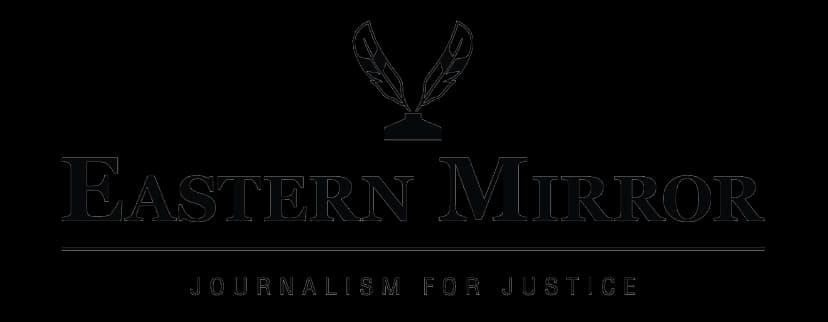SATURDAY, JUNE 21, 2025
- Home
- Breath, Balance, and Resilience: A Holistic Approach to Respiratory Health in Changing Times
Breath, Balance, and Resilience: A Holistic Approach to Respiratory Health in Changing Times
Respiratory health lies at the heart of this resilience, and it is no coincidence that traditional healing systems and modern science.
Published on Jun 19, 2025
By EMN
Share
As the world adapts to the emergence of new Covid-19 variants, our focus must shift from fear to fortification—not only of the body but also of the breath, immunity, and mind. Respiratory health lies at the heart of this resilience, and it is no coincidence that traditional healing systems and modern science both point toward breath as a bridge between stress and strength, illness, and immunity. Let us explore how inflammation reduction, flexibility, and breath work—through the lens of modern medicine, Ayurveda, and the 7 chakras—can help us thrive, not just survive.
The Respiratory System and Inflammation: A Modern Medical View
The respiratory system is not just a set of lungs—it is a living, breathing interface with the world. Modern science shows that respiratory distress—be it from Covid-19, pollution, or chronic bronchitis—is often worsened by systemic inflammation. When inflammation becomes chronic, the alveoli (tiny air sacs in the lungs) stiffen, impairing oxygen exchange. The result? Fatigue, breathlessness, brain fog, and poor immunity.
What helps?
• Anti-inflammatory nutrition: Omega-3 fatty acids, antioxidants (from berries, greens), and spices like turmeric reduce pro-inflammatory cytokines.
• Respiratory exercises: Diaphragmatic breathing improves oxygenation and reduces the respiratory rate.
• Stress reduction: Chronic stress triggers inflammation via elevated cortisol and worsens lung function.
Ayurveda and Respiratory Wellness
In Ayurveda, the lungs are governed by the Prana Vata subdosha- a force of vital energy that controls breathing, sensory perception, and mental clarity. Lungs also interact with Kapha dosha, which governs structure and mucus. Imbalance in either leads to congestion, asthma, or shallow breathing.
The 7 Chakras and Their Respiratory Connections
The chakra system, an ancient map of the body’s energy flow, aligns beautifully with modern anatomy and psychosomatic medicine. Each chakra has a corresponding influence on the respiratory system and inflammation.
1. Muladhara (Root Chakra) – Base of spine
· Governs physical survival and immune stability.
· Chronic fear weakens immunity and triggers inflammation.
· Modern correlation: Cortisol overdrive and vagus nerve dysfunction.
2. Swadhisthana (Sacral Chakra) – Pelvic region
· Governs fluidity, lymphatic drainage, and elimination.
· Blockage here often leads to water retention and sluggish detox.
· Modern correlation: Link between poor lymph flow and systemic inflammation.
3. Manipura (Solar Plexus) – Diaphragm region
· The seat of fire (Agni), governs digestion, willpower, and diaphragm strength.
· A weak manipura disrupts effective breathing and metabolic detox.
· Modern correlation: Diaphragmatic flattening reduces tidal volume.
4. Anahata (Heart Chakra) – Chest and lungs
· Directly governs the respiratory and circulatory systems.
· Grief, heartbreak, or loneliness can literally “constrict” the chest.
· Modern correlation: Link between emotional trauma and decreased lung capacity.
5. Vishuddha (Throat Chakra) – Throat and upper respiratory tract
· Expression and communication, both literal and immune.
· Blocked throat chakra may reflect recurrent infections, cough, or suppressed emotions.
· Modern correlation: Stress-linked immunosuppression and frequent respiratory infections.
6. Ajna (Third Eye) – Mid-forehead
· Governs perception, pituitary gland, and autonomic regulation.
· A balanced Ajna helps regulate breath naturally.
· Modern correlation: Parasympathetic activation during mindful breathing.
7. Sahasrara (Crown Chakra) – Top of head
· Connects us to consciousness and peace.
· When activated (via meditation), inflammation markers reduce, oxygenation improves.
· Modern correlation: Meditation reduces CRP (C-reactive protein) and improves HRV (heart rate variability).
Breath Practices to Improve Oxygenation
You don’t need elaborate tools—just your lungs and intention. Here are three powerful tools for better breathing:
1. Diaphragmatic Breathing (Belly Breathing):
· Place a hand on your belly and chest.
· Inhale slowly through the nose, allowing the belly to rise.
· Exhale gently, allowing the belly to fall.
· Enhances oxygenation and parasympathetic tone.
2. Bhramari Pranayama (Humming Bee Breath):
· Close your ears with your fingers, inhale deeply, and exhale with a humming sound.
· This sound vibration increases nitric oxide production, which dilates the bronchi and improves airflow.
3. Nadi Shodhana (Alternate Nostril Breathing):
· Balances left-right brain activity and clears nasal passages.
· Especially helpful for anxiety-induced breath holding or shallow breathing.
Improving Flexibility and Lymphatic Flow
Tightness in the thoracic spine, rib cage, or diaphragm can restrict breath. Flexibility practices are not just for movement—they are key to lung expansion.
· Asanas like Bhujangasana (Cobra), Setu Bandhasana (Bridge), and Marjariasana (Cat-Cow) enhance rib cage mobility.
· Lymphatic stretches and dry brushing support detoxification and reduce inflammation.
· Hydration and warm baths aid fascia relaxation, essential for respiratory elasticity.
Daily Integrative Routine
Here’s a simplified plan blending all systems:
Morning:
· Tongue scraping + warm turmeric water
· 15 mins yoga + 5 mins Bhramari
· Nasya oil drops
Afternoon:
· Light lunch with cumin, turmeric, and ghee
· 5 mins of alternate nostril breathing
Evening:
· Warm bath + sesame oil self-massage
· Gratitude journaling (supports heart chakra)
· Silent meditation (Ajna + Sahasrara)
Conclusion: Healing as Integration
Respiratory health is not isolated—it mirrors our emotional landscape, immune terrain, and inner stillness. When Ayurveda, chakras, and modern science come together, healing is not just holistic—it becomes personal. In the face of viral evolution, our best shield is internal evolution—through mindful breathing, clean nourishment, energy awareness, and compassionate living.
Dr Ashwini Anil Kumar Sirapanasetty
(The author is an obstetrics & gynaecologist surgeon. Tribal Reformist, Adolescent’s Sexual & Reproductive Health Counsellor, Expert Yoga Trainer & Senior Counsellor of Army Wives Welfare Association)

